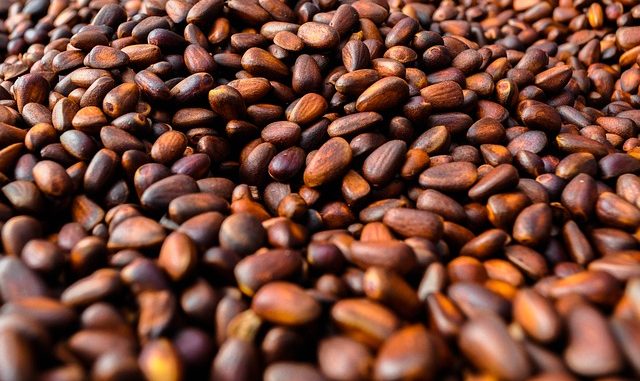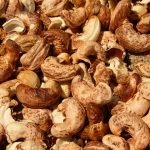
Pine nuts are those little teardrop seeds that make Italian pestos what they truly are. These are the edible seeds of Pinus pinea fir trees which are grown in much of the Southern Mediterranean.
The tree itself grows widely throughout Europe and into North America. In all there are 20 species of pine tree throughout the world that can produce seeds large enough to be viably commercial (Lanner, 1981).
Pine nuts from most if not all species can be eaten but are just not large enough or prolific enough to be harvested. The Chinese, North Koreans and Japanese are avid producers of their own types of pine nut but the most famous come from Liguria in the north of Italy.
The pine nut is usually eaten raw but its flavour is usually improved by roasting or toasting. In cuisine around the world, they are often added to fish and meat as well as vegetable dishes so they have a considerable versatility.
Nutrition
Pine nuts are good sources of all sorts of minerals and vitamins. They contain no cholesterol (Megre, 2005).
The energy value is 628kcal/100g. Other key features:
- protein (11.6g/100g)
- carbohydrates (19.3g/100g)
- fatty acids (61g/100g)
Of the fatty acids, 85 per cent are unsaturated fatty acids and 15 per cent saturated fatty acids. The most common unsaturated fatty acids are linoleic (48.4%), oleic (25.50%) and pineloic (14.90%) acids.
The amino acids of note are tryptophan and histidine.
Taste Issues And Disturbances
Raw pine nuts can cause a peculiar issue with the taste buds which are described as taste disturbances. The phenomenon can last for a few days to a month. It is thought that Chinese pine nuts may be responsible. The species responsible is Pinus armandii.
References
Brufau, G. and Boatella, J. (2006). Rafecas Nuts: Source of energy and macronutririons. Br. J. Nutr., 96: pp. 24 -28 (Article)
Lanner, R., (1981). The Pinon pine. A Natural and preconditioning a healthy heart phenomenon? Cultural History. University of Nevada Press, Trends. Pharmacol. Sci., 19: pp. 223-229.
Megre, V. (2005). The Ringing Cedars Series, book 1. Columbia, Missouri: Ringing Cedars Press, pp: 224.


Useful summary of what is an important ingredient. They are so expensive nowadays. I’m looking for alternatives to pine nuts in my Italian cooking. I liked your recipe as well that used pine nuts in a dish for chard and another one for leek.